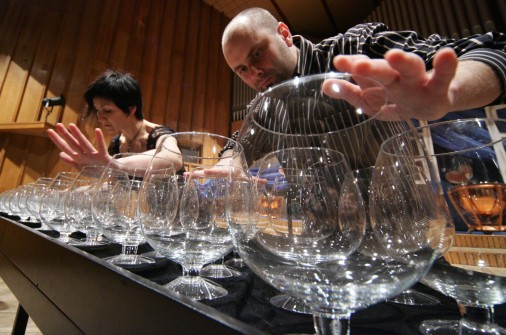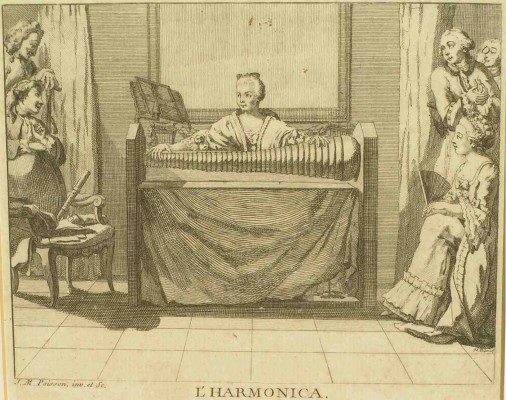Can An Instrument’s Sound Cause Insanity? Maybe.
“The glass armonica’s ethereal notes were said to cause insanity, depression, and marital problems.”
It was thought that the glass armonica’s ghostly and ghastly notes caused insanity in it’s musicians and listeners. People were frightened by Benjamin Franklin’s new musical invention due to it’s strange interactions with the human brain and ears.
Benjamin Franklin invented the glass armonica in 1761 after being profoundly moved by the sounds of the glass harp (image below).
Today, living in a technological world where any and all sounds are taken for granted, I cannot immagine what it would be like to witness the “birth” of a new sound - similarly unimaginable as the discovery of a new color.
“…the armonica excessively stimulates the nerves, plunges the player into a nagging depression and hence into a dark and melancholy mood that is apt method for slow self-annihilation. If you are suffering from any nervous disorder, you should not play it; if you are not yet ill you should not play it; if you are feeling melancholy you should not play it.
The glass armonica’s sound is perceived by human ears differently than other instruments because its range is between 1,000 and 4,000 hertz. When sounds are below 4,000 hertz, the human brain compares “phase differences” between the left and right ears to triangulate the origin of the sound rather than comparing volumes. This causes hearing disorientation and a “not quite sure” feeling about where the sound is coming from.
It’s Modern Revival
Between the 1830s to the 1920s, the glass armonica was forgotten. Only recently, after several re-engineering efforts, has the armonica made a come back into music. I recommend the album “Music of the Spheres” by William Wilde Zeitler for more listening.
And For A Little Fun
For those who like to play with things, head over to the Franklin Institute’s online Glass Armonica website.
And a shoutout to all the taxonomy heads out there: friction instruments of this type are called friction idiophones. The glass armonica is called a crystallophone while the glass harp is called a hydrocrystalophone.
Sources:
- http://en.wikipedia.org/wiki/Glass_harmonica
- http://www.thomasbloch.net/en_glassharmonica.html
- http://www.thefrugalwinesnob.com/?p=873
Leave a Comment
Logged in as - Log out


1 Comment
Uh, if anything about the glass armonica “caused insanity” it would have been the LEAD in the glass, not it’s sound . . . sheer superstition. Also, “Hydraulis” was developed in old Roman times for gladitorial entertainment; anything based on such water-powered air would be an “updating.”
Tom Rhea.